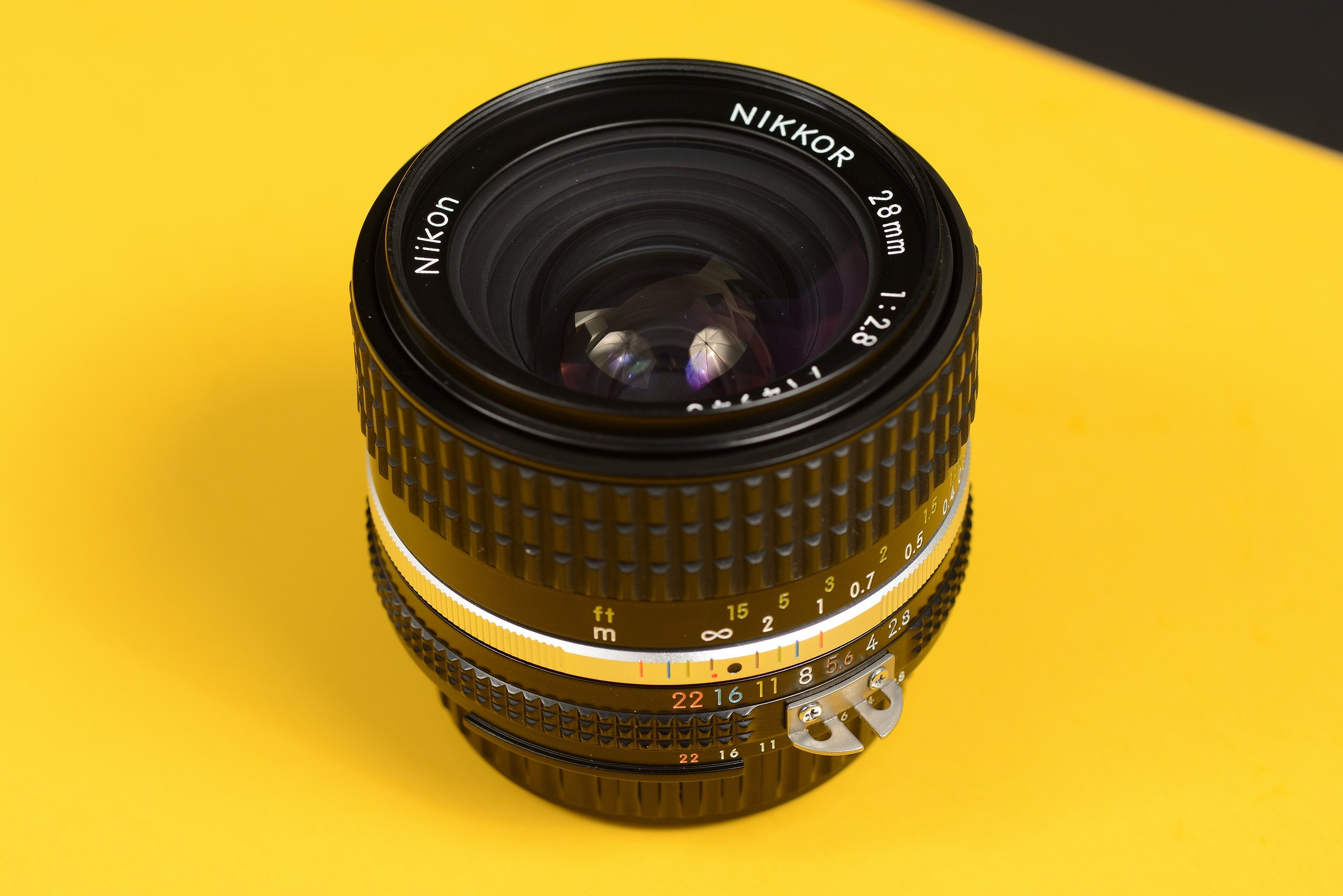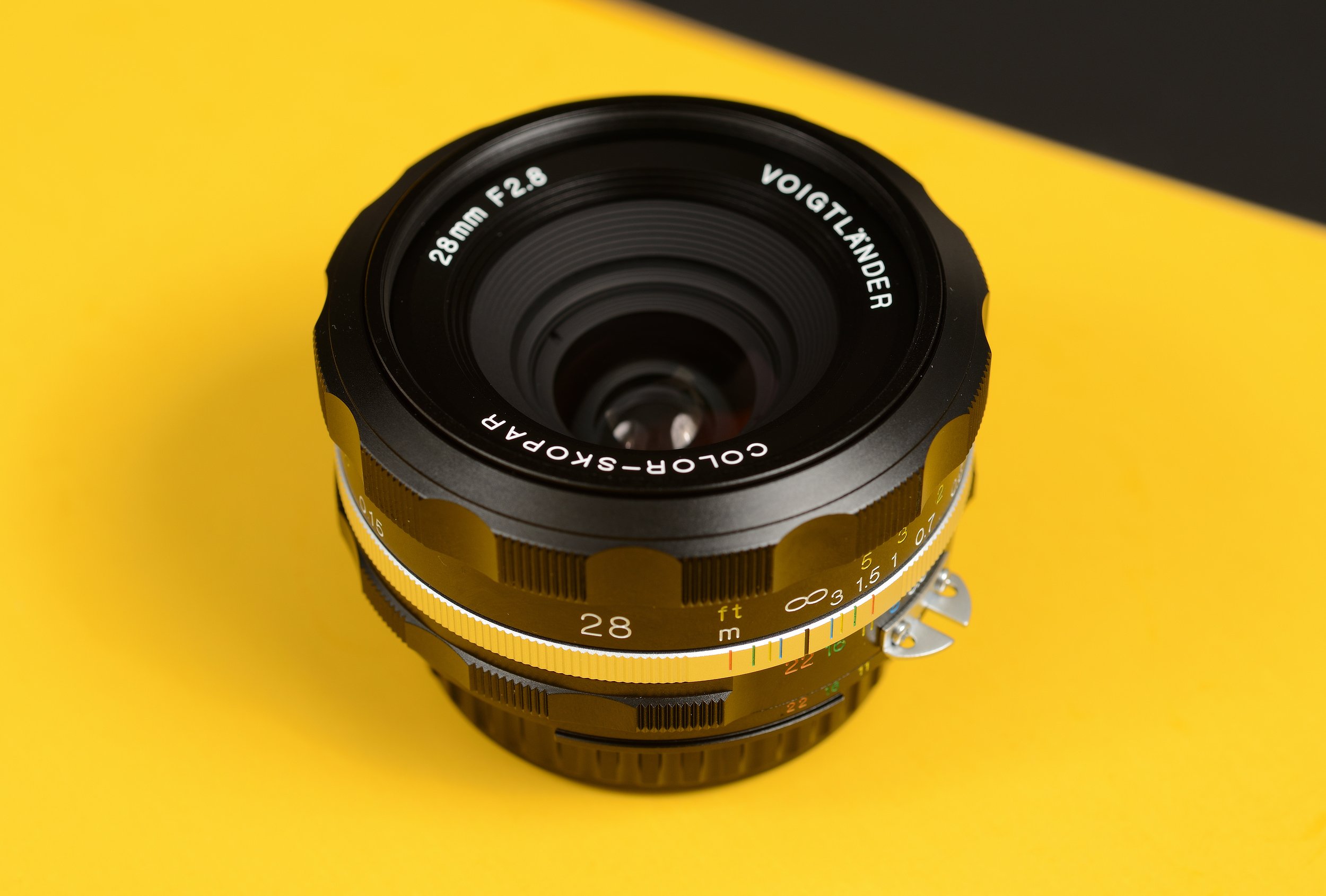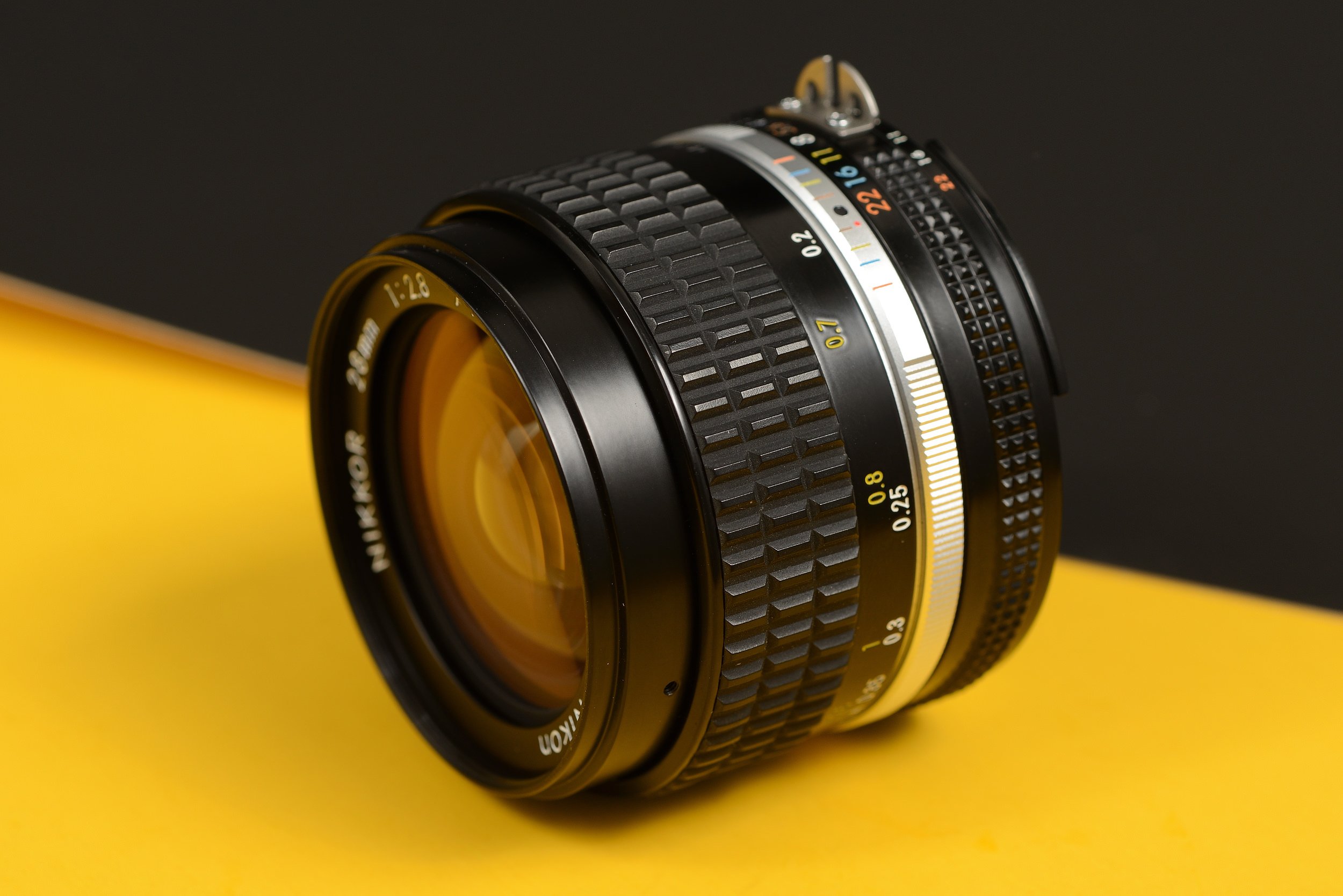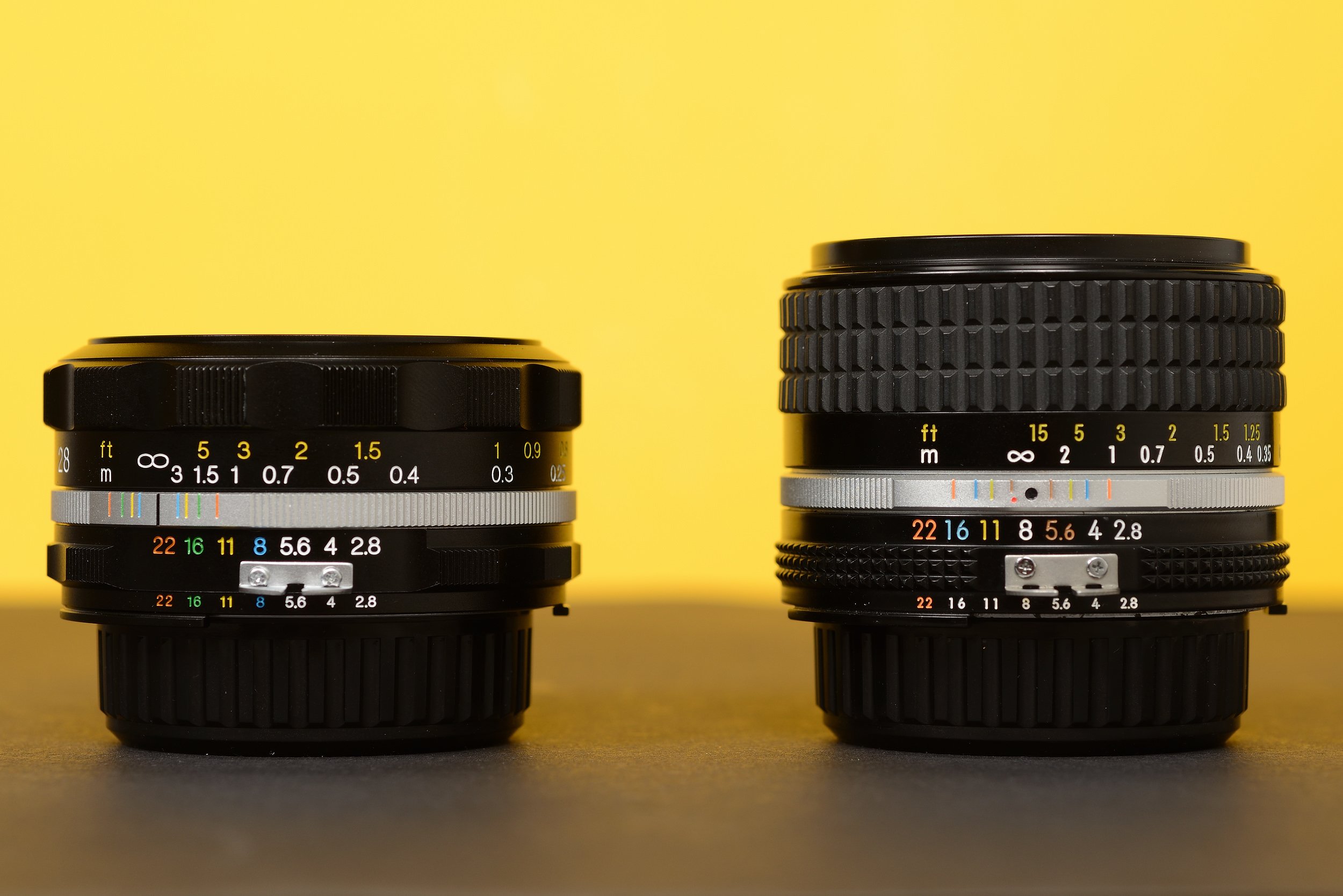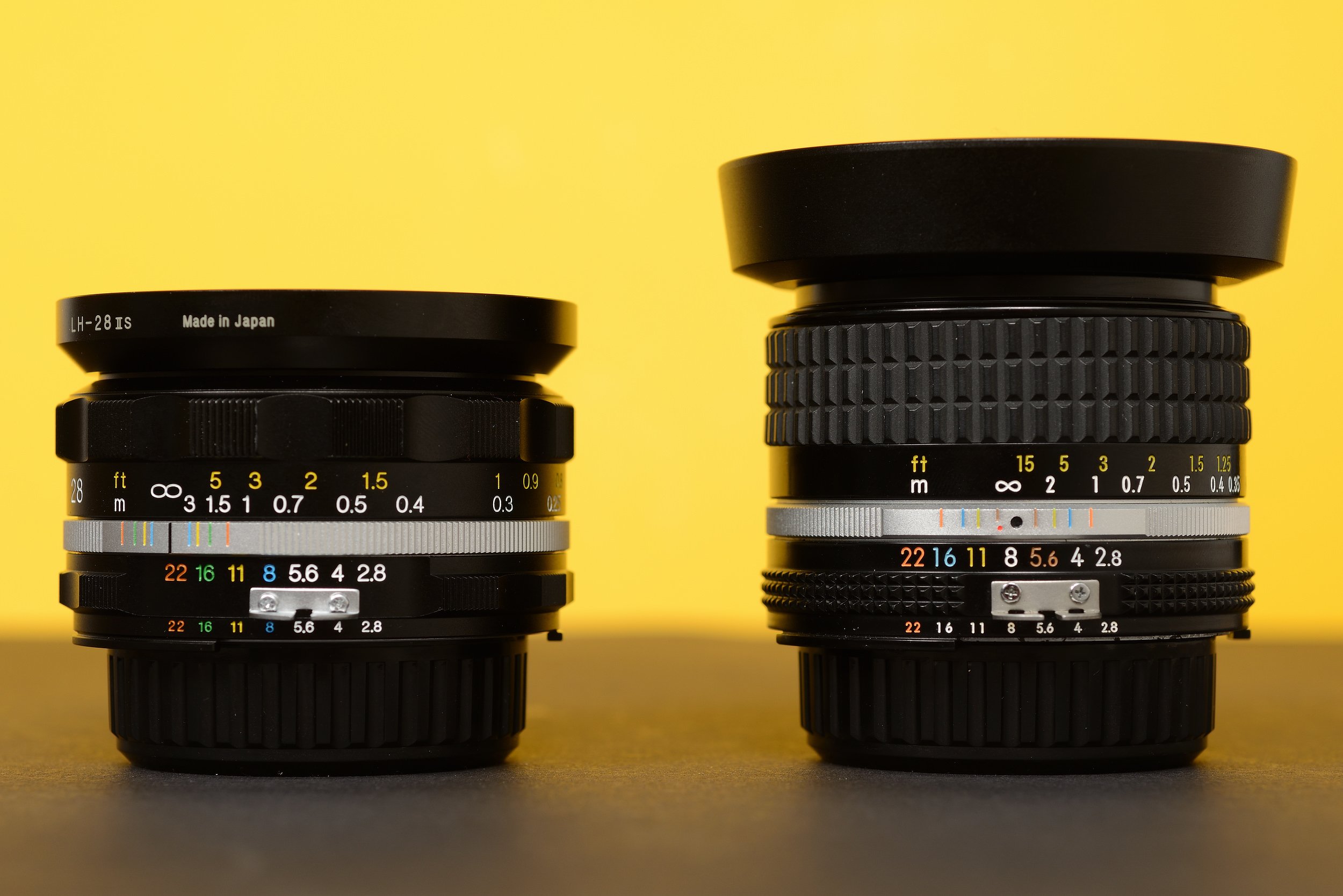Nikon 28mm f/2.8 AiS (late) vs. Voigtländer 28mm f/2.8 SLII-S
Introduction
I love 28mm lenses for the look they produce and their versatility – that is probably why I own too many of them (currently four for Nikon F-mount).
This article will provide an in-depth review of two of them: The well renowned Nikkor 28mm f/2.8 Ai-S and the modern Voigtländer 28mm f/2.8 SLII-S.
The Nikon 28mm Ai-S was first introduced in 1981. My copy is a mint late version Nikkor with the serial number 714946 dating its production around the year 2000.
Nikon 28mm f/2.8 Ai-S (late version)
The Voigtländer 28mm SL-IIS builds on the company’s tradition of high-quality SLR lenses and was introduced in 2021. It is manufactured in Japan by Cosina.
Voigtländer Color Skopar 28mm f/2.8 SL-IIS
Review
Design and Handling
The all metal Nikkor follows the traditional 1970ies design language of Nikon. It features a classic ribbed, hard rubber focusing ring and the aperture ring has a coupling prong for use with pre-Ai bodies. However, it has no CPU chip which means that it cannot transmit the precise aperture information and subject distance to new Nikon bodies, compromising compatibility with Nikon’s advanced flash metering system.
Nikon 28mm f/2.8 Ai-S (late version)
The Voigtlander’s design takes styling cues from an even earlier period. Its focusing ring with the ridge and valley design as well as the coupling prong makes the lens appear like it was made in the 1960ies. However, the similarities are only superficial as it features a CPU-chip making it fully compatible with the latest Nikon DSLR bodies, allowing for accurate exposure and flash metering.
Voigtländer Color Skopar 28mm f/2.8 SL-IIS
Both lenses are of very high build quality and nice to operate. If I had to pick one over the other, I would go for the Color Skopar, as I prefer the vintage look and handling experience. It also seems that the Color Skopar is a little bit smoother to focus, probably because it is newer and considerably lighter than the Nikkor.
Size and Weight
The Voigtlander is very compact and light with only 203.5g. It can be considered a pancake lens.
The Nikkor 28mm Ai-S is quite a bit heavier weighing 257g. Its size is what I would call “normal”. It is not pocket-able but also not bigger than one would expect.
With the lens hood attached, the size difference becomes even more apparent as the Nikkor uses the boxy HN-2, while the Voigtlander uses the very small LH-28IIS.
Voigtländer 28mm f/2.8 SL-IIS & Nikkor 28mm f/2.8 Ai-S
Voigtländer 28mm f/2.8 SL-IIS & Nikkor 28mm f/2.8 Ai-S
Optical Properties
As a preamble, it is fair to state that both lenses produce very good images.
The Voigtlander Color Skopar has 7 elements in 6 groups with 9 diaphragm blades compared to the 8 elements in 8 groups with only 7 diaphragm blades of the Nikkor Ai-S.
Regarding lens technology, the Nikkor has Nikon’s CRC system (close range correction) which should ensure sharp images even at its close focusing distance of 0.2m. The Voigtlander is capable of focusing even closer, down to 0.15m.
The version in this test (production run until 2005 with serial numbers between 635073 – 837751) does not have the Super Integrated Coating (SIC), which was introduced in the subsequent production run.
Major Findings
The Voigtländer 28mm f/2.8 SL-IIS has a wider angle of view than the Nikon.
The Nikon 28mm f/2.8 Ai-S has a miniscule purple cast compared to the Voigtlander.
The Nikon 28mm f/2.8 Ai-S is sharper in the extreme edges of the frame until f/8. From then on both lenses are equal.
Sharpness and contrast in the center of the frame are indistinguishable at all apertures and distances.
The Voigtlander has most likely a more pronounced field curvature than the Nikkor, which leads to a more three-dimensional look but also the previously mentioned decreased extreme edge sharpness when comparing shots of rather flat subjects.
The Voigtlander has a slightly more pronounced vignette until f/8. From then on, vignetting is practically gone in both lenses.
The Voigtlander seems to have better light transmission of about 1/3 EV when shooting at close distance.
Close Distance
Note: The following images were shot with a Nikon D800 under controlled circumstances. The subject distance was 0.25m.
Nikon 28mm f/2.8 AiS; f/2.8
Voigtländer 28mm f/2.8 SL-IIS; f/2.8
Nikon 28mm f/2.8 AiS; f/2.8
Voigtländer 28mm f/2.8 SL-IIS; f/2.8
Medium Distance
Note: The following images were shot outdoors with a Nikon D800. The subject distance was about 2m.
Nikon 28mm f/2.8 AiS; f/4
Voigtländer 28mm f/2.8 SL-IIS; f/4
Nikon 28mm f/2.8 AiS; f/4
Voigtländer 28mm f/2.8 SL-IIS; f/4
Long Distance
Note: The following images were shot outdoors with a Nikon D800. The lenses where focused to approximately infinity.
Nikon 28mm f/2.8 AiS; f/5.6
Voigtländer 28mm f/2.8 SL-IIS; f/5.6
Nikon 28mm f/2.8 AiS; f/5.6
Voigtländer 28mm f/2.8 SL-IIS; f/5.6
Conclusion
The optical performance of both lenses is essentially on par – the differences in sharpness are far too insignificant to matter in practice.
Apart from optics, the Voigtlander Color Skopar has some advantages over the Nikkor as it is lighter, smaller, can focus closer and has a CPU-chip.
I personally prefer the Voigtländer slightly, as its design is a real eye-catcher when attached to older Nikon SLR bodies. Plus I really like how it renders images.

